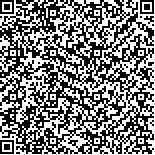| 引用本文: |
黄秋晴, 黎柳, 李鸿, 谭丹妮, 喻嵘.基于转录组学探讨当归芍药散对db/db小鼠肾脏保护作用的潜在机制[J].湖南中医药大学学报,2024,44(6):967-975[点击复制] |
|
| |
|
|
| 本文已被:浏览 1117次 下载 439次 |
| 基于转录组学探讨当归芍药散对db/db小鼠肾脏保护作用的潜在机制 |
| 黄秋晴,黎柳,李鸿,谭丹妮,喻嵘 |
| (湖南中医药大学, 湖南 长沙 410208) |
| 摘要: |
| 目的 基于转录组学和实验验证探究当归芍药散对db/db糖尿病肾病小鼠肾脏的保护机制。方法 25只8周龄造模成功的db/db小鼠按体质量随机均分为模型组(20 mL/kg蒸馏水)、达格列净组(1.3 mg/kg)、当归芍药散低剂量组(8.39 g/kg)、当归芍药散中剂量组(16.77 g/kg)、当归芍药散高剂量组(33.54 g/kg),每组5只;另选5只同龄db/m小鼠作为空白组(20 mL/kg蒸馏水)。每组灌胃1次/d,连续6周。给药结束后,检测各组小鼠体质量、空腹血糖(fasting blood glucose, FBG)、口服糖耐量试验(oral glucose tolerance test, OGTT)的曲线下面积(area under thecurve, AUC);采用全自动生化分析仪检测尿白蛋白肌酐比值(urea albumin creatinine ratio, UACR)、甘油三酯(triglyceride, TG)、总胆固醇(total cholesterol, TC);采用肌酐比色法检测血肌酐(serum creatinine, Scr);采用尿素比色法检测小鼠血尿素氮(blood urea nitrogen, BUN);采用HE染色观察肾脏组织病理形态;采用转录组学芯片技术检测小鼠肾组织差异基因,并对当归芍药散中剂量组差异基因进行KEGG富集分析;采用RT-PCR法检测表达量TPM>10的核心基因在肾脏组织中的mRNA表达水平。结果 与空白组比较,模型组小鼠体质量、OGTT-AUC、FBG、UACR、Scr、BUN、TG、TC显著升高(P<0.01)。与模型组相比,达格列净组、当归芍药散各剂量组小鼠体质量、OGTT-AUC、FBG、UACR、Scr、BUN、TG、TC均降低(P<0.05,P<0.01)。与空白组相比,模型组共筛选出1 129个差异基因,其中上调差异基因337个、下调差异基因792个。与模型组相比,当归芍药散共筛选出271个差异基因,其中上调差异基因195个、下调差异基因76个。空白组、模型组、当归芍药散中剂量组三组差异共表达基因57个,其中TPM>10的核心基因共12个,包括Gsta2、Cyp4a12a、Slc8a1、Abcc4、Cpeb4、Serpina1b、Npl、Aacs、Kap、Slc5a10、Tmem252、Ifi27l2a。12个核心基因的mRNA表达水平与转录组测序趋势相同。与模型组比较,当归芍药散中剂量组小鼠Gsta2、Abcc4、Slc8a1、NPL mRNA表达水平升高(P<0.05,P<0.01),Slc5a10、Tmem252 mRNA表达水平下降(P<0.05)。当归芍药散中剂量组差异基因富集于药物代谢-细胞色素P450、谷胱甘肽代谢、活性氧等相关通路。结论 当归芍药散具有改善糖尿病肾病预后的作用,其机制可能与调控Gsta2、Slc5a10、Abcc4、Slc8a1、Tmem252、Npl等基因表达,调控细胞色素P450、谷胱甘肽代谢、活性氧等信号通路相关。 |
| 关键词: 当归芍药散 db/db小鼠 糖尿病肾病 转录组学 差异表达基因 活血利水 |
| DOI:10.3969/j.issn.1674-070X.2024.06.006 |
| 投稿时间:2024-02-25 |
| 基金项目:国家自然科学基金联合基金重点支持项目(U21A20411);湖南中医药大学研究生创新课题项目(2022CX55)。 |
|
| Potential mechanism of Danggui Shaoyao Powder on renal protection in db/db mice based on transcriptomics |
| HUANG Qiuqing, LI Liu, LI Hong, TAN Danni, YU Rong |
| (Hunan University of Chinese Medicine, Changsha, Hunan 410208, China) |
| Abstract: |
| Objective To explore the renal protective mechanism of Danggui Shaoyao Powder (DGSYP) on diabetic nephropathy in db/db mice through transcriptomics and experimental verification. Methods A total of 25 eight-week-old db/db mice were randomized into model group (20 mL/kg distilled water), dapagliflozin group (1.3 mg/kg), low-dose DGSYP group (8.39 g/kg), medium-dose DGSYP group (16.77 g/kg), and high-dose DGSYP group (33.54 g/kg), with five mice in each group. Another five db/m mice of the same age were set as blank group (20 mL/kg distilled water), and each group was intragastrically administered once a day for six consecutive weeks. After administration, the body weight, fasting blood glucose (FBG), and area under the curve (AUC) of the oral glucose tolerance test (OGTT) were measured. Urine albumin creatinine ratio (UACR), triglyceride (TG), and total cholesterol (TC) were determined by automatic biochemical analyzer. Serum creatinine (Scr) was examined by creatinine colorimetry. The blood urea nitrogen (BUN) was checked by urea colorimetry. HE staining was used to observe the pathological morphology of renal tissue. The differential genes in mouse renal tissue were determined by transcriptome chip technology, and the differential genes of mice in DGSYP group were analyzed by KEGG enrichment analysis. The mRNA expression levels of core genes with TPM>10 in renal tissue were determined by RT-PCR. Results Compared with the blank group, the model group showed significant increases in body weight, OGTT-AUC, FBG, UACR, Scr, BUN, TG, and TC (P<0.01). Compared with the model group, the dapagliflozin group and DGSYP groups showed decreases in body weight, OGTT-AUC, FBG, UACR, Scr, BUN, TG, and TC (P<0.05, P<0.01). Compared with the blank group, a total of 1 129 differential genes were screened out in the model group, including 337 up-regulated differential genes and 792 down-regulated differential genes. Compared with the model group, a total of 271 differential genes were screened out in medium-dose DGSYP group, including 195 up-regulated differential genes and 76 down-regulated differential genes. There were 57 differentially expressed genes in the blank group, model group, and the medium-dose DGSYP group, among which there were 12 core genes with TPM>10, including Gsta2, Cyp4a12a, Slc8a1, Abcc4, Cpeb4, Serpina1b, Npl, Aacs, Kap, Slc5a10, Tmem252, and Ifi27l2a. The mRNA expression levels of the 12 core genes were consistent with the transcriptome sequencing trend. Compared with the model group, the mRNA expression levels of Gsta2, Abcc4, Slc8a1, and NPL in the medium-dose DGSYP group increased (P<0.05, P<0.01), while the mRNA expression levels of Slc5a10 and Tmem252 decreased (P<0.05). The differential genes in the medium-dose DGSYP group were enriched in drug metabolism-cytochrome P450, glutathione metabolism, and reactive oxygen species, and other related pathways. Conclusion DGSYP can improve the prognosis of diabetic nephropathy, and its mechanism may be related to regulating Gsta2, Slc5a10, Abcc4, Slc8a1, Tmem252, Npl, and other gene expressions as well as modulating cytochrome P450, glutathione metabolism, reactive oxygen species, and other signaling pathways. |
| Key words: Danggui Shaoyao Powder db/db mice diabetic nephropathy transcriptomics differentially expressed genes circulating blood and promoting urination |
|

二维码(扫一下试试看!) |
|
|
|
|




